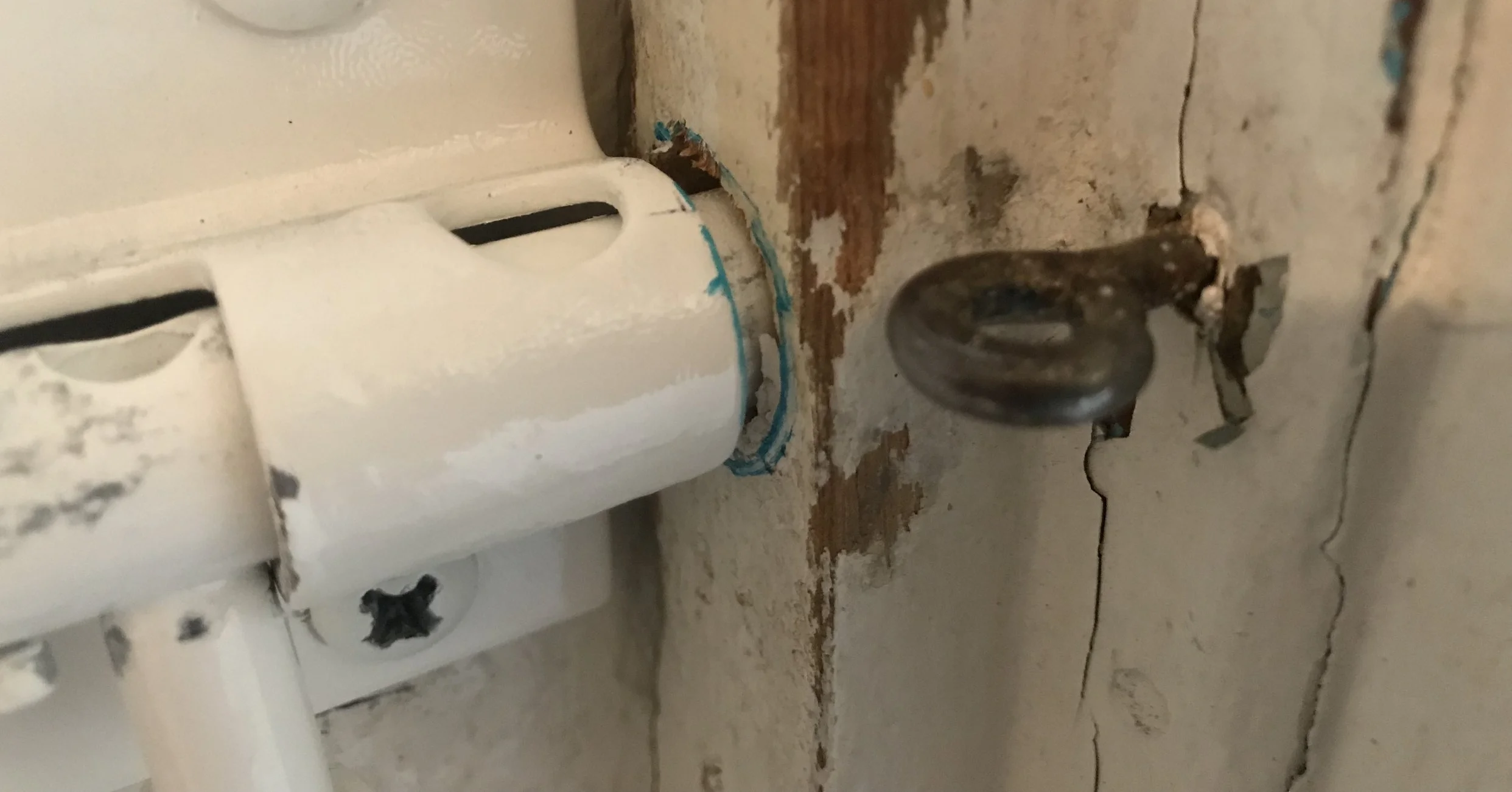When the Lock is Stronger Than the Door
There's a restaurant in my neighborhood that I love to walk to. Like so many old local New Orleans places the food is out of this world, but many of those other aspects so well attended to in modern chain restaurants aren't attended to at all. The AC is iffy, the floor hasn't been painted in over a decade, and some of the chairs wobble. It takes me back to my childhood, when money wasn't cheap, and business owners focused on what they did best. Did I mention that the food here is great?
One of the things that got little attention in this place was the lock on the bathroom door. Like many small places, there's only a single bathroom for both staff and guests. The old door, likely original to the old building, was locked on the inside with a screen door hook. There's no way to tell if someone is in there unless you try to open the door. Over the years the hook has broken many times as someone gave the door an overly enthusiastic tug. In recent months a new piece of 1/4" plywood was added to the door to hold a new hook, and the cycle began again. Again, it must have come apart, because today the staff proudly mentioned their new bathroom door lock. They were so proud, I went to look at it. It was indeed prodigious.
The door was now held with a 1/2" steel throw bolt sliding more than an inch into the door frame. No matter how strong a pull on the door, this lock would not give way. The door would break first. I guess that was their point.
You may be wondering about my point, and why I'm telling you about a bathroom door in a blog about Theory of Constraints. Locking a door with a lock that is stronger than the door is an example of a common phenomenon. When a problem occurs, any business owner will fix it promptly with the lowest cost (in both time and money) solution. When the problem recurs, it is fixed again. With each subsequent fix, frustration mounts with the need to repeatedly fix the problem. Also with each subsequent fix, the owner's commitment to the fix increases. Whether it's quality off the assembly line, readmissions in an addiction treatment center, potholes in a parking lot, or a door lock that keeps breaking, once we determine a fix, we try that fix again and again with ever greater effort until "it works." And it usually is seen to work, when the fix is so over the top as to shift the problem to another place. That is, when the lock is stronger than the door.
No matter the organization, this example of mastering a local optimum is common. It is a natural thing for humans to attempt a solution because they believe in it. When it doesn't work, most people do not check all their assumptions. Instead, the double down on the effort, sure that they have the right solution. There was just something missing or something else in the way. We just have to try harder.
This path is not the best one though. When a treatment for an illness doesn't work, the first thing a doctor should do is reconsider the diagnosis. When a pothole recurs in the same place after being filled, the city should consider if there's an underlying reason. If the screen door lock gets pulled off time and time again, we could ask, "Why is everyone pulling on the door when there's someone already in there?" The thing is, when problems occur, they are rarely the core original problem. They are most often effects of something else.
But we don't most often look for that something else. We don't often question ourselves or our systems. We just see a problem, determine the quickest intuitive fix, and go for it. If it doesn't work, we still don't question our understanding or our systems, we just go for it, bigger and bigger, until the solution to the problem is so big that we don't hear about the problem anymore. Our frustration has taken over and we usually "fix" the problem with something so big and so expensive that it causes other problems elsewhere. Examples abound, from the War on Drugs to a little screen door hook in an old uptown New Orleans eatery.
At this favorite little restaurant, the door tugging won't stop with this solution. The pressure won't be on the screen hook though. It will be on the 100 year old door frame that was never meant to meet a 1/2" stainless steel bolt. When we forget our goal is the finest customer experience and instead focus on the local optimum of making sure the lock doesn't break when you tug on it, we will focus on solutions that don't increase productivity towards the goal. I've seen this in every organization I've ever been a part of. It's a great place for people wishing to improve productivity to look first.

